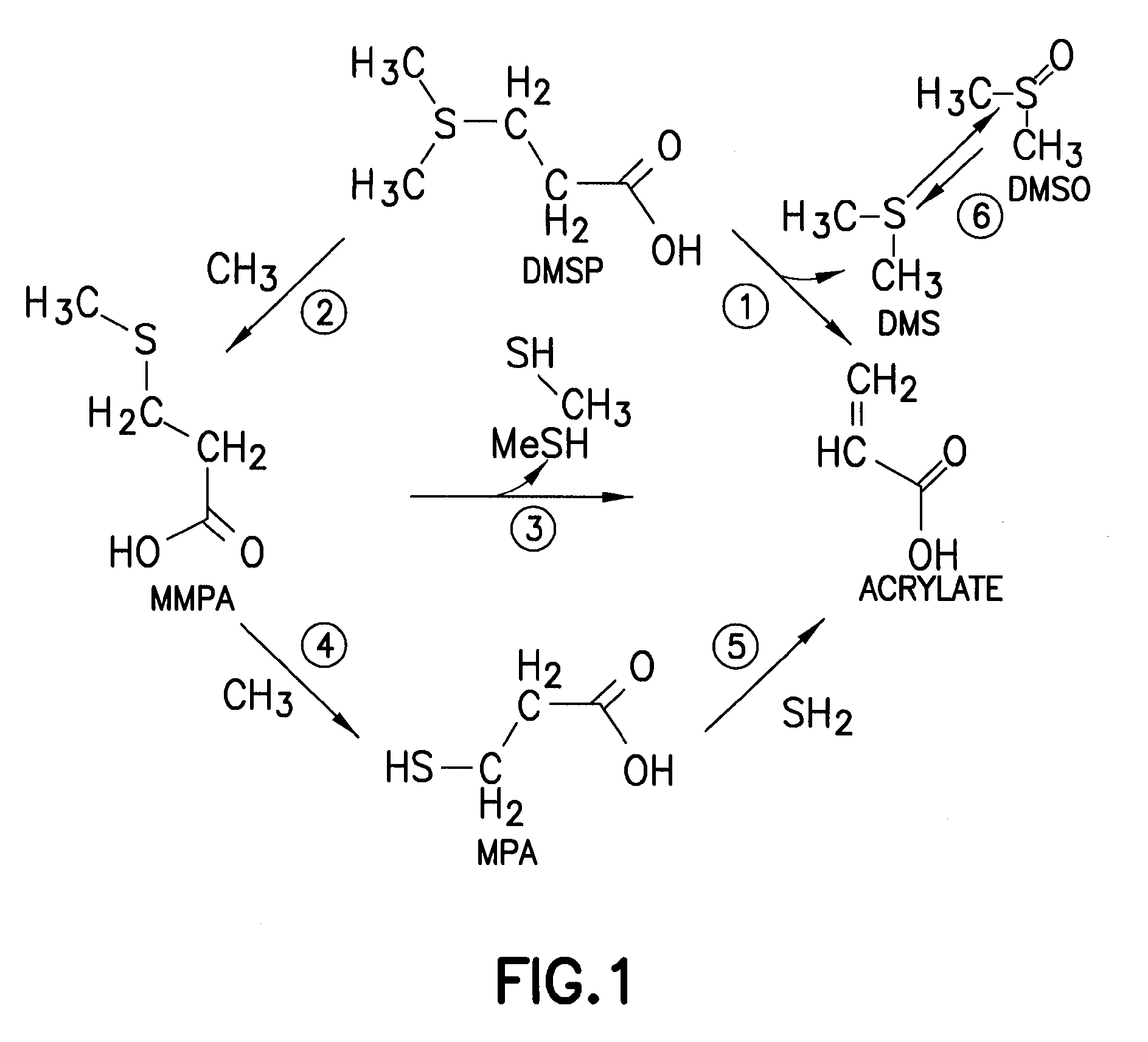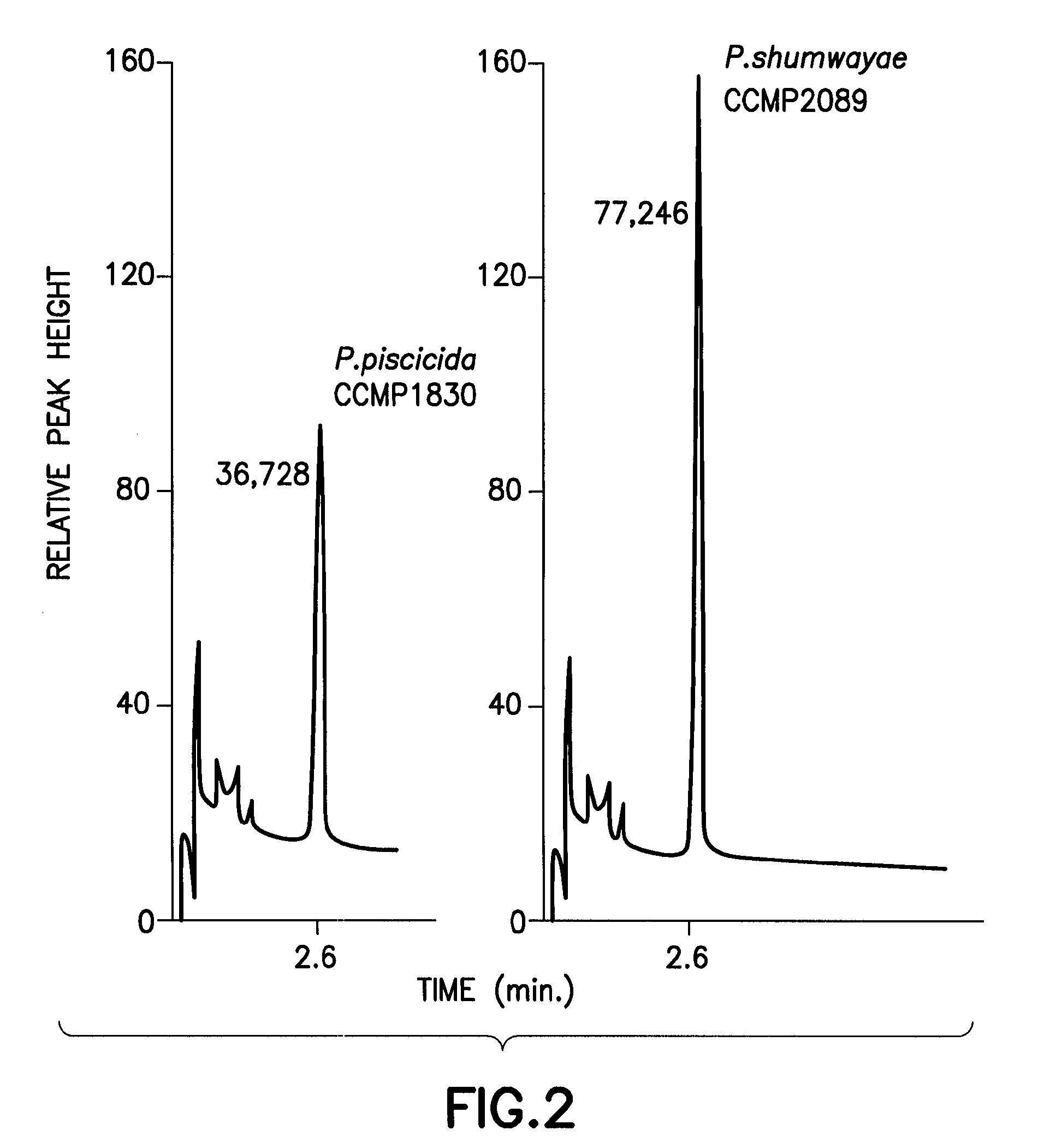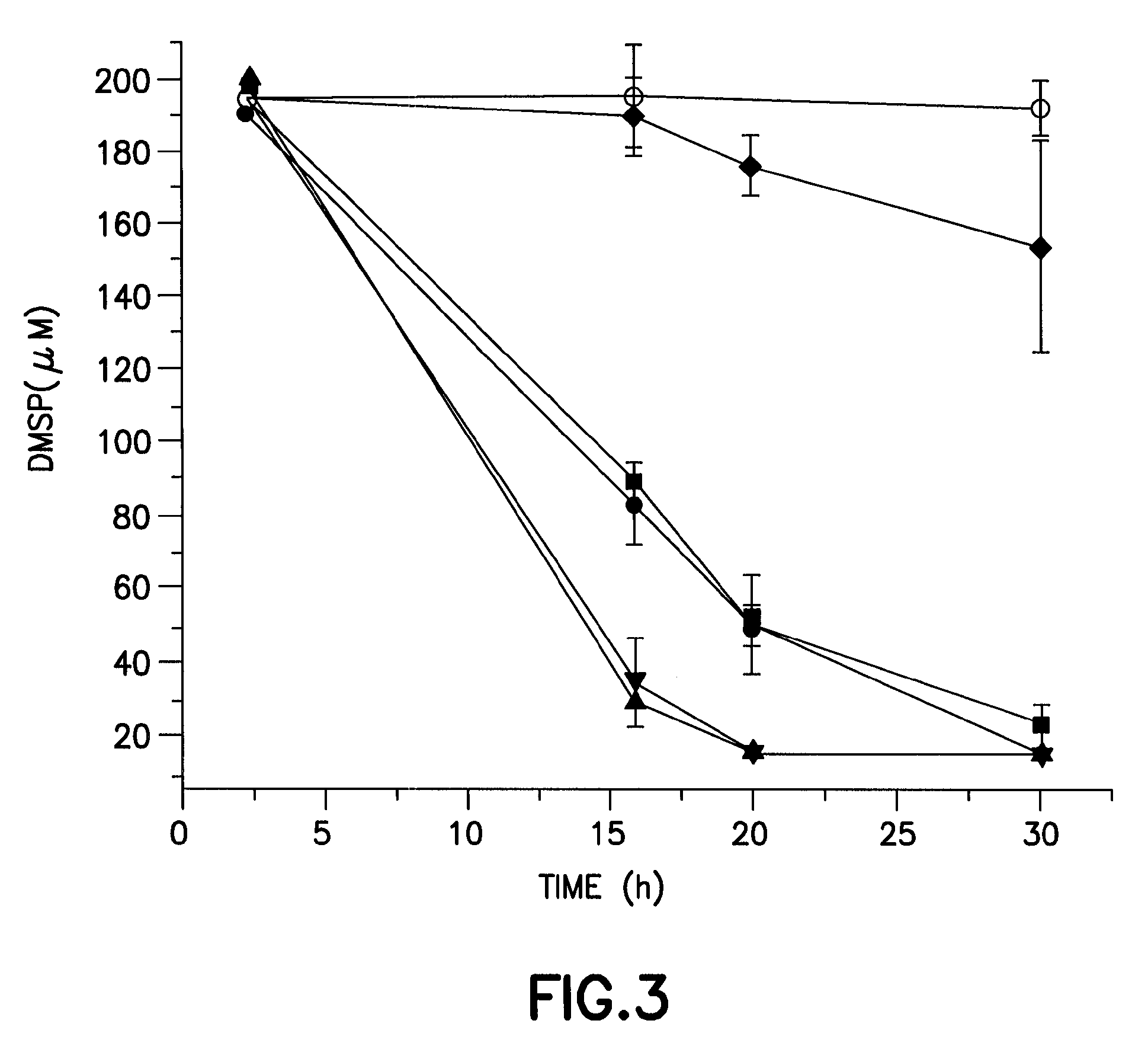Silicibacter sp. strain useful for genetic transformation of marine algae and production of antibiotic agents
a technology of marine algae and genetic transformation, applied in the field of silicabacter sp. strain, can solve the problems of ineffective vaccination at the larval stage, and achieve the effect of preventing the attachment of other bacteria
- Summary
- Abstract
- Description
- Claims
- Application Information
AI Technical Summary
Benefits of technology
Problems solved by technology
Method used
Image
Examples
example 1
[0079]The production of DMSP by P. piscicida and P. shumwayae was measured and DMSP catabolism by the Pfiesteria cultures was assessed and the bacterial communities associated with them. New dinoflagellate-associated roseobacters capable of DMSP degradation by both the lyase and demethylation pathways were isolated and identified. The results show that both P. piscicida and P. shumwayae contain significant levels of DMSP. The DMSP contents of the two Pfiesteria species (3.44 to 4.25 μM) (Table 1) are similar to those measured in other dinoflagellates.
TABLE 1Intracellular DMSP contents of Pfiesteria speciesIntracellular DMSPSpeciesStrain(pg per cell)Cell vol (nl)DMSP (μM)P. piscicida18300.410.69 ± 0.123.44 ± 1.00P. shumwayae20890.400.55 ± 0.024.25 ± 1.47
[0080]For example, the intracellular DMSP concentrations in photosynthetic species, such as Prorocentrum, Gymnodinium, and Amphidinium species, are reported to be 1 to 10 μM (Keller et al., 1996). Interestingly, the concentration of D...
example 2
Chemotaxis of Silicibacter sp. Strain TM1040
[0113]Next, it was determined and discussed the mechanics of how and why the Silicibacter sp. strain TM1040 maintains its interaction with P. piscicida. TM1040 possesses three lophotrichous flagella (shown in FIG. 8) and is highly motile, leading to an understanding that TM1040 interacts with P. piscicida through a chemotactic response to compounds produced by its dinoflagellate host. A combination of a rapid chemotaxis screening assay and a quantitative capillary assay were used to measure chemotaxis of TM1040. To help identify the essential attractant molecules within the homogenates, a series of pure compounds were tested for their ability to serve as attractants. The results show that TM1040 is strongly attracted to amino acids and DMSP metabolites, while being only mildly responsive to sugars and the tricarboxylic acid cycle intermediates. Adding pure DMSP, methionine, or valine to the chemotaxis buffer resulted in a decreased respons...
example 3
[0142]The results of the present study show that Silicibacter sp. strain TM1040, originally isolated from P. piscicida dinoflagellate cultures, senses and responds chemotactically to compounds produced by the dinoflagellate cells. Thus, this represents the first report of chemotaxis behavior of a Roseobacter clade bacterial species. Since Roseobacter species are prevalent in marine environments and abundant within blooms of DMSP-producing phytoplankton, chemotaxis to DMSP by these bacteria is likely to be an important mechanism in establishing close interactions with the dinoflagellate at both the physical and physiological levels.
[0143]Many physiological characteristics of the Roseobacter clade of bacteria, such as Silicibacter sp. strain TM1040, make them well suited for life in close proximity to dinoflagellates and algal cells. The area immediately surrounding a dinoflagellate is a habitable niche for some marine bacteria, it is not surprising to find that a dinoflagellate-assoc...
PUM
| Property | Measurement | Unit |
|---|---|---|
| Fraction | aaaaa | aaaaa |
| Electrical conductance | aaaaa | aaaaa |
| Temperature | aaaaa | aaaaa |
Abstract
Description
Claims
Application Information
 Login to View More
Login to View More - R&D
- Intellectual Property
- Life Sciences
- Materials
- Tech Scout
- Unparalleled Data Quality
- Higher Quality Content
- 60% Fewer Hallucinations
Browse by: Latest US Patents, China's latest patents, Technical Efficacy Thesaurus, Application Domain, Technology Topic, Popular Technical Reports.
© 2025 PatSnap. All rights reserved.Legal|Privacy policy|Modern Slavery Act Transparency Statement|Sitemap|About US| Contact US: help@patsnap.com



